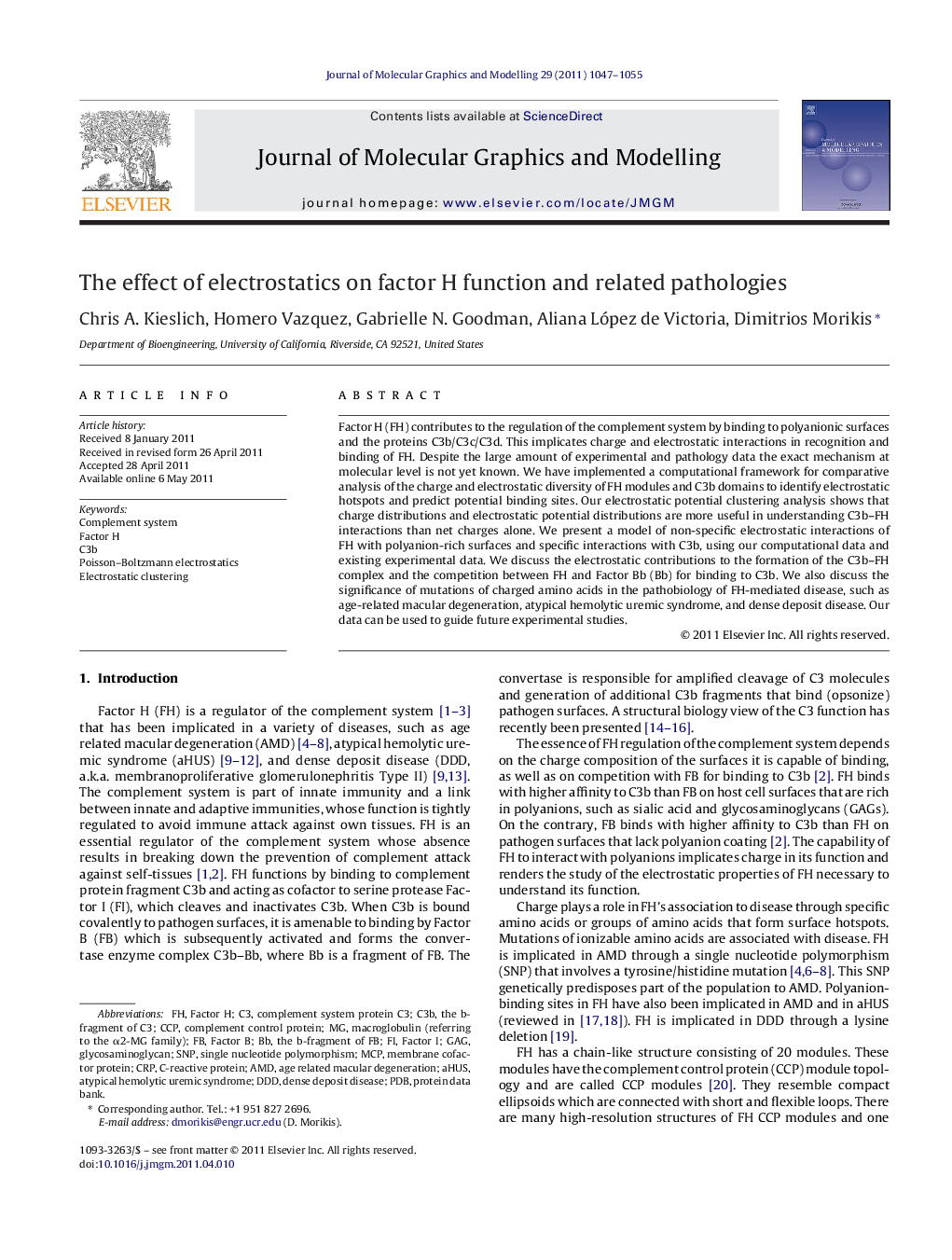| Article ID | Journal | Published Year | Pages | File Type |
|---|---|---|---|---|
| 444467 | Journal of Molecular Graphics and Modelling | 2011 | 9 Pages |
Factor H (FH) contributes to the regulation of the complement system by binding to polyanionic surfaces and the proteins C3b/C3c/C3d. This implicates charge and electrostatic interactions in recognition and binding of FH. Despite the large amount of experimental and pathology data the exact mechanism at molecular level is not yet known. We have implemented a computational framework for comparative analysis of the charge and electrostatic diversity of FH modules and C3b domains to identify electrostatic hotspots and predict potential binding sites. Our electrostatic potential clustering analysis shows that charge distributions and electrostatic potential distributions are more useful in understanding C3b–FH interactions than net charges alone. We present a model of non-specific electrostatic interactions of FH with polyanion-rich surfaces and specific interactions with C3b, using our computational data and existing experimental data. We discuss the electrostatic contributions to the formation of the C3b–FH complex and the competition between FH and Factor Bb (Bb) for binding to C3b. We also discuss the significance of mutations of charged amino acids in the pathobiology of FH-mediated disease, such as age-related macular degeneration, atypical hemolytic uremic syndrome, and dense deposit disease. Our data can be used to guide future experimental studies.
Graphical abstractFigure optionsDownload full-size imageDownload high-quality image (175 K)Download as PowerPoint slideHighlights► We computationally analyze the electrostatic diversity of FH and C3b domains. ► We present a model of electrostatic interactions of FH with cell surfaces and C3b. ► We discuss the role of charged residues in the pathobiology of FH-mediated disease. ► We discuss the role of electrostatics in FH/FBb competition for C3b binding.
